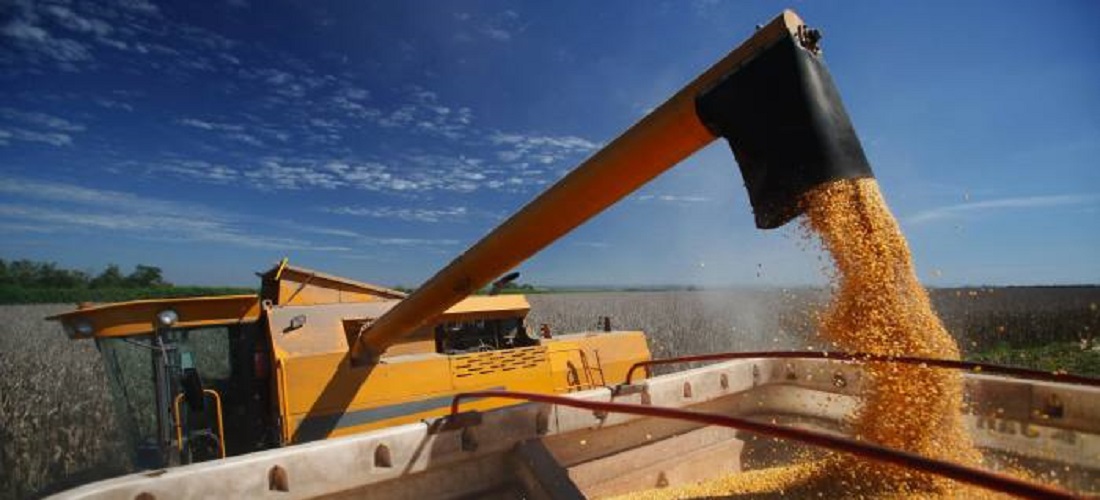
China pivot from US farm imports bolsters it against trade war risks
Nov, 01, 2024 Posted by Gabriel MalheirosWeek 202443
China’s push to shift its food import sources since 2018 has put it in a better position to impose tit-for-tat tariffs on U.S. farm goods with less harm to its food security if trade friction with Washington flares after the U.S. presidential election.
The threat of a trade war looms for China, the world’s top importer of farm products such as soybeans and corn, with Republican candidate Donald Trump floating blanket 60% tariffs on Chinese goods in a bid to boost U.S. manufacturing.
His opponent Kamala Harris, a Democrat, is also expected to confront China on trade.
Since Trump was in the White House, China has slashed its dependence on U.S. farm goods in a concerted effort to beef up national security, including food self-sufficiency.
The pivot began in 2018, when Beijing slapped 25% tariffs on imports of U.S. soybeans, beef, pork, wheat, corn and sorghum, retaliating against duties imposed by the Trump administration on $300 billion worth of Chinese goods.
The move led to a reshaping of global agriculture trade flows, despite Trump and then-Chinese Vice Premier Liu signing a pact in January 2020 under which Beijing promised to boost purchases of U.S. goods and services, including farm products.
Instead, China has decreased U.S. purchases, buying more grain from Brazil, Argentina, Ukraine and Australia, even as it boosts domestic production.
“Beijing feels much safer knowing the U.S. has less leverage over China’s food security in the event of a major conflict,” said Even Pay, agriculture analyst at Beijing-based consultancy Trivium China.
“That reduction is by design,” she said.
This year, the share of China’s soybean imports from the U.S. has dropped to 18%, from 40% in 2016, while Brazil’s share has grown to 76% from 46%, according to Chinese customs data.
For corn, Brazil overtook the U.S. as China’s top supplier in 2023, just one year after Beijing approved purchases from the South American agricultural powerhouse.
Meanwhile, Chinese livestock companies have been reducing use of soymeal in feed – a move to ease reliance on imported soybeans – while Beijing has approved genetically modified soybean and corn varieties to boost output.
China’s agriculture ministry did not immediately respond to a request for comment.
A spokesperson for Trump did not directly comment on the drop in China’s reliance on U.S. farm exports, but pointed to Trump’s comments that tariff is “a beautiful word” and “we will take in hundreds of billions of dollars into our treasury and use that money to benefit the American citizens.”
Harris’ campaign website says the Democratic candidate “will not tolerate unfair trade practices from China or any competitor that undermines American workers”.
STOCKING UP
In anticipation of post-election tensions, Chinese buyers have boosted agricultural imports, including American soybeans and corn, traders and analysts say.
Imports of soybeans, used mainly for animal feed, are up 8% in the first nine months of the year, with barley purchases increasing 63% and sorghum shipments climbing 86%.
“This time is different. China is well stocked up on most of its needs,” said a trader at an international trading company in Singapore which sells grains and oilseeds to China and declined to be named as they were not authorised to speak with media.
“There won’t be any supply shock immediately and it will give China time to plan and redirect purchases,” he said.
U.S. soybean export premiums are at their highest in 14 months, as grain merchants race to ship a record harvest ahead of the election.
While Beijing would prefer to avoid targeting food staples in a tit-for-tat trade war, it may be forced to do so, said Wendong Zhang, an assistant professor and agricultural economist at Cornell University in Ithaca, New York.
“China’s retaliation would be proportional in terms of trade value and with the goal to inflict economic and political cost, which tends to lead to retaliation on agricultural products.”
China’s overall trade surplus with the U.S. totalled $33.33 billion in September alone, limiting its options to retaliate.
“China … can reduce its exposure to U.S. goods only to some extent. There are only limited places where you can get these products from,” Dennis Voznesenski, an analyst at Commonwealth Bank of Australia.
US FARMERS VULNERABLE
Polls show Harris and Trump to be neck and neck, although Trump leads in most agricultural heartland states even though the last trade war was a blow to U.S. farmers and led Trump’s administration to pay them about $23 billion in compensation, according to the Government Accountability Office.
About half of American soybeans, the top U.S. export to China, are shipped to the country, accounting for $15.2 billion of trade in 2023, according to the U.S. Census Bureau.
Soybean and corn prices are trading near four-year lows amid ample world supplies, fuelling worry among U.S. farmers.
“We are very concerned. We are not the only soybean producer in the world. South America is producing an awful lot of soybeans,” said Mark Tuttle, a soybean farmer in northern Illinois. “If we were to institute more tariffs, that would be very detrimental to our situation.”
Reporting by Mei Mei Chu and Naveen Thukral; Additional reporting by Karl Plume in Chicago; Editing by Tony Munroe and Sonali Paul
Source: Reuters
-
Grains
Jan, 23, 2020
0
Zimbabwe imports 100,000 tons of maize from Brasil
-
Shipping
Dec, 21, 2021
0
New FIL maritime trade lane increases Asia’s participation at TCP
-
Oil and Gas
Jul, 11, 2019
0
Argentina offers US$2bn tender for Vaca Muerta gas pipeline
-
Ports and Terminals
Sep, 15, 2021
0
ANTAQ collaborating with IBAMA to survey residue handling by vessels at Santos


